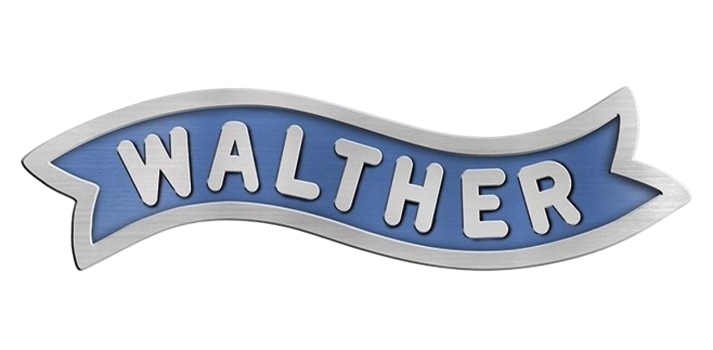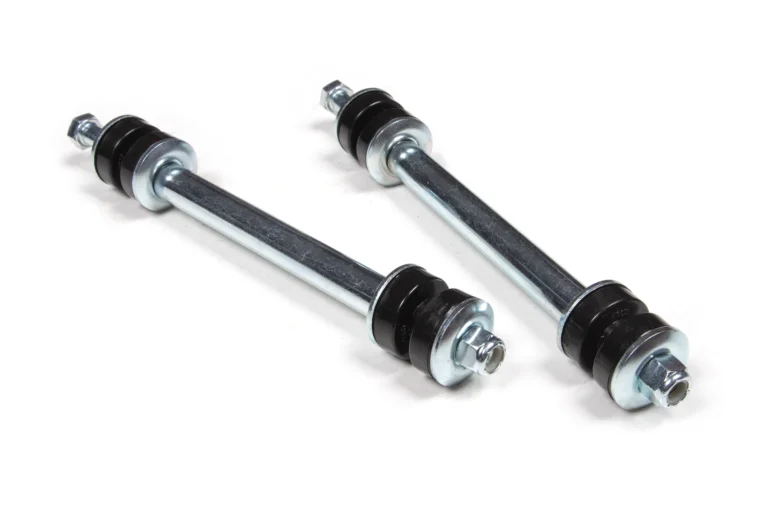When it comes to your vehicle’s suspension system, one crucial but often overlooked component is the sway bar link. Also known as an anti-roll bar link, it plays a significant role in maintaining stability and comfort while driving. Whether you’re cruising down a smooth highway or navigating sharp corners, the sway bar link helps reduce body roll and enhances handling. In this article, we will explore what a sway bar link is, its importance, common signs of wear, and how to choose the right one for your vehicle. Additionally, we will compare different sway bar link’s on the market to help you make an informed decision.
What Is a Sway Bar Link?
A sway bar link is a critical component of a vehicle’s suspension system, connecting the sway bar (or anti-roll bar) to the suspension. The sway bar itself is designed to reduce the vehicle’s body roll during turns by transferring forces from one side of the vehicle to the other. The sway bar link, in turn, allows for the connection between the sway bar and the rest of the suspension system, ensuring that the sway bar functions properly.
When you take a sharp turn, centrifugal force causes the body of the vehicle to lean to one side. The sway bar helps counteract this leaning by using its rigidity to apply a force that prevents excessive roll. Without a properly functioning sway bar link’s, the sway bar can’t perform this task effectively, leading to poor handling and a less stable driving experience.
Key Functions of a Sway Bar Link:
- Reduces Body Roll: Sway bar lin’k help limit the leaning of the vehicle’s body when turning, offering a more balanced and stable ride.
- Improves Handling: By minimizing body roll, the sway bar lin’k ensures better control during high-speed maneuvers and tight turns.
- Enhances Comfort: A properly functioning sway bar lin’k reduces the roughness experienced when driving over uneven terrain, providing a smoother ride.
The Importance of the Sway Bar Link in Your Vehicle
While the sway bar lin’k may seem like a small part of your car, it plays an essential role in overall vehicle safety and performance. Here’s why you shouldn’t ignore it:
- Improved Cornering Stability: A vehicle with a worn or damaged sway bar link’s can feel unstable, particularly when making sharp turns or lane changes. This leads to an unsafe driving experience, especially at high speeds or in adverse weather conditions.
- Reduced Tire Wear: Without the sway bar link functioning properly, uneven weight distribution can cause excessive tire wear. The vehicle’s suspension system won’t distribute the weight evenly, resulting in some tires wearing out faster than others.
- Better Ride Quality: Sway bar lin’k also help in reducing vibration and harshness when driving over bumps or potholes. Without them, the ride might feel more rigid or bouncy.
- Preventing Suspension Damage: If a sway bar lin’k fails completely, it can lead to unnecessary stress on other suspension components, causing premature wear and costly repairs.
Common Signs of a Worn Sway Bar Link
Knowing the signs of a worn or damaged sway bar lin’k is crucial for vehicle maintenance. Here are the most common symptoms to watch out for:
- Clunking or Rattling Noises: A broken or loose sway bar link’s often causes a clunking sound, especially when driving over bumps or when turning. This is a result of the sway bar making contact with other components of the suspension system.
- Poor Handling or Excessive Body Roll: If you notice that your vehicle feels less stable in turns or seems to lean too much, your sway bar link could be the culprit. A faulty link will prevent the sway bar from working properly, leading to more body roll.
- Uneven Tire Wear: Damaged sway bar lin’k can affect how weight is distributed across your tires. This can result in one or more tires wearing out more quickly than the others.
- Warning Lights: In some cases, modern vehicles may trigger a warning light on the dashboard if they detect problems with the suspension system, including issues with the sway bar lin’k.
Replacing a Sway Bar Link
Replacing a worn or damaged sway bar link’s is crucial for maintaining the vehicle’s handling and ride quality. Fortunately, it’s a relatively straightforward process, though it requires some basic mechanical knowledge. Here’s how it’s done:
- Lift the Vehicle: Using a jack, lift the vehicle and support it securely on jack stands.
- Locate the Sway Bar Link: The sway bar link’s is usually located between the sway bar and the suspension arm. You may need to remove a wheel to access it.
- Remove the Old Link: Use a wrench or socket set to remove the bolts that attach the sway bar lin’k to the sway bar and suspension.
- Install the New Link: Place the new sway bar link in the same position as the old one and tighten the bolts.
- Test the Vehicle: Once the new link is installed, lower the vehicle and test it by driving at slow speeds. Listen for any noises and check the handling.
If you’re not comfortable performing this replacement yourself, it’s advisable to consult a professional mechanic.
Choosing the Right Sway Bar Link for Your Vehicle
When selecting a sway bar link, it’s important to consider factors such as compatibility, material, and durability. Here are some tips to help you make the right choice:
- Compatibility: Ensure that the sway bar link’s you choose is specifically designed for your vehicle’s make and model. Some vehicles require unique sway bar lin’k designs, so always check your vehicle’s specifications before purchasing.
- Material: Sway bar lin’k are typically made from steel, aluminum, or high-strength composites. Steel is durable and can withstand heavy-duty use, while aluminum is lighter but may not be as durable. Composites offer a balance of weight and strength.
- Durability: Opt for sway bar lin’k from reputable brands known for producing high-quality, long-lasting parts. It’s better to spend a little extra on a durable sway bar link than to replace a cheaper one frequently.
- Aftermarket vs. OEM: You have the choice of purchasing either aftermarket or Original Equipment Manufacturer (OEM) sway bar link’s. OEM parts are typically more expensive but ensure a perfect fit and performance, while aftermarket parts might be more affordable but vary in quality.
Sway Bar Link Comparison Chart
To help you decide on the best sway bar link’s for your vehicle, we’ve put together a comparison chart of some popular options available in the market. Below are a few factors to consider when comparing different brands and models:
| Brand | Material | Fitment | Durability | Price Range | Warranty |
| Moog K80027 | Steel | Exact Fit | High | $30 – $50 | Limited |
| AC Delco 45G2303 | Steel | Exact Fit | High | $40 – $60 | 1 Year |
| Detroit Axle | Steel | Universal | Moderate | $20 – $40 | 1 Year |
| Raybestos 562-1044 | Aluminum | Exact Fit | High | $50 – $80 | 1 Year |
| Mevotech MK80117 | Steel | Exact Fit | High | $25 – $45 | 3 Years |
Key Considerations:
- Moog K80027: Known for excellent durability, this steel sway bar lin’k is designed to be an exact fit for many vehicles. It’s a great choice for those looking for reliable, long-term performance.
- AC Delco 45G2303: As an OEM replacement part, this sway bar lin’k offers top-notch quality and fitment, ensuring the vehicle performs as originally designed.
- Detroit Axle: A more budget-friendly option, Detroit Axle sway bar links are suitable for vehicles with standard driving conditions but may not last as long as higher-end models.
- Raybestos 562-1044: Made of aluminum, this sway bar lin’k is lightweight and corrosion-resistant, offering a balance between performance and longevity.
- Mevotech MK80117: With a 3-year warranty, this sway bar link is ideal for drivers who want peace of mind and a cost-effective solution for everyday driving.
Conclusion
The sway bar link is a vital part of your vehicle’s suspension system that contributes significantly to ride comfort, handling, and overall safety. It’s essential to pay attention to any signs of wear and replace the sway bar lin’k when necessary. By choosing a high-quality sway bar link’s that’s compatible with your vehicle, you’ll ensure that your car remains stable, smooth, and safe on the road.
Whether you’re dealing with clunking noises, poor handling, or simply looking to upgrade your suspension system, the right sway bar link can make all the difference in improving your driving experience. Keep this guide handy, and you’ll be well-equipped to maintain or replace your sway bar link’s for optimal performance.

